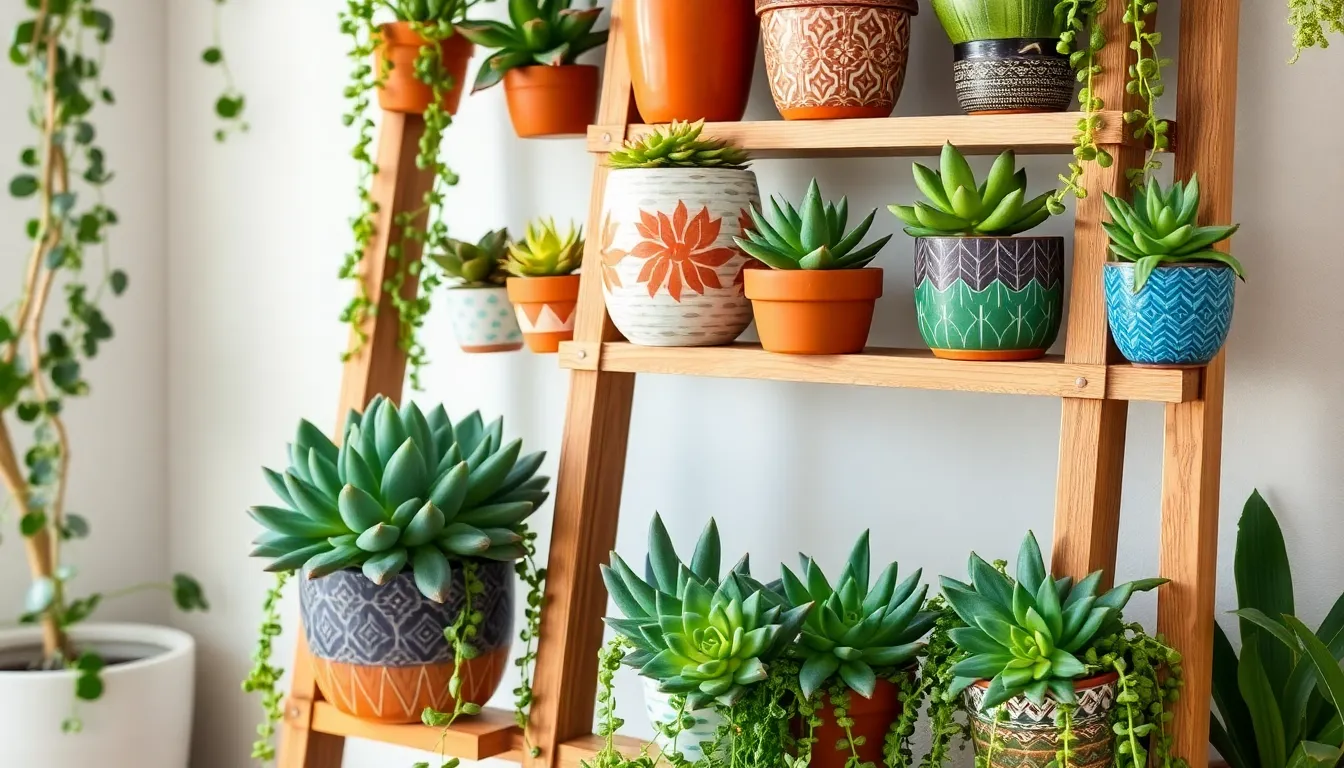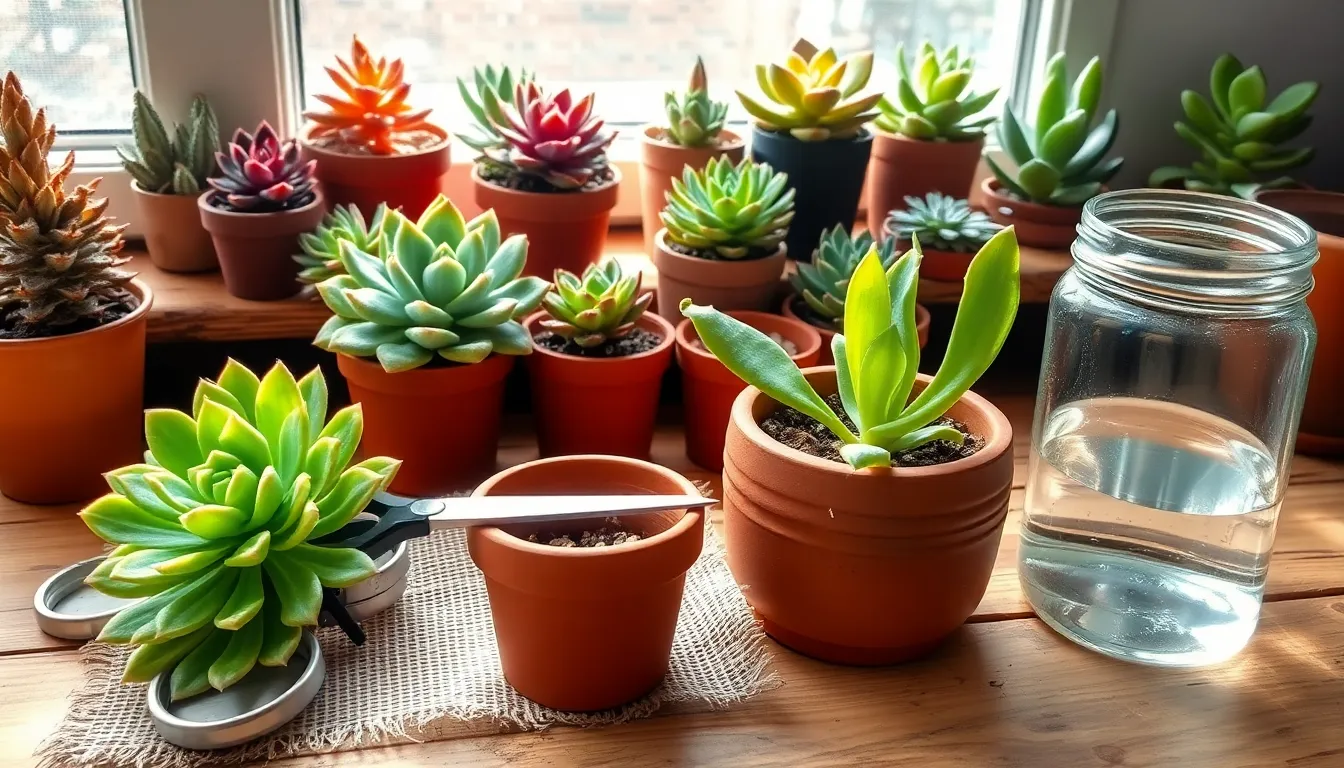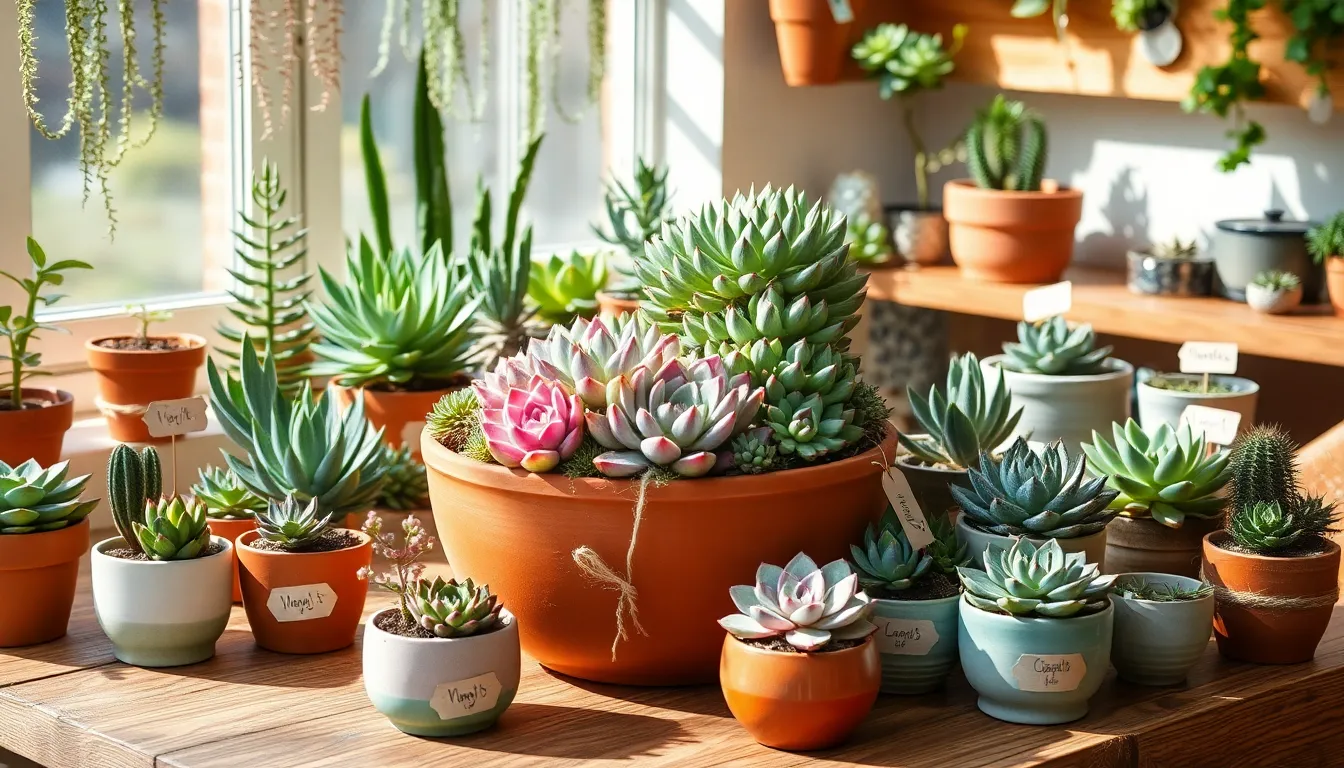If you’ve ever thought your apartment was too small to enjoy the joys of gardening, think again! Whether you’re a budding gardener just starting out or a seasoned plant enthusiast looking to maximize your green space, succulents offer the perfect solution to bring life and beauty into even the tiniest of living spaces.
Succulents are not only stunning but also incredibly practical, making them an ideal choice for apartment dwellers. This guide provides seven ingenious ways to incorporate these resilient, low-maintenance plants into your home, promising to transform your living environment into a lush oasis without the need for vast amounts of space.
Imagine the thrill of watching your indoor garden flourish, adding a touch of nature to your daily routine and enhancing your home ambiance. With these space-saving succulent ideas, you’re not just gaining decorative plants; you’re also cultivating a rewarding hobby that brings tranquility and a sense of accomplishment right to your doorstep.
Utilize Vertical Wall Planters

Vertical wall planters are a perfect way to maximize space while bringing a lush, green aesthetic to your apartment. They allow you to grow a variety of succulents even in tight spaces, turning any blank wall into a living masterpiece.
When setting up a vertical garden, ensure your wall planter has adequate drainage to prevent root rot. Choose a well-draining soil mix, such as one designed specifically for succulents or cacti, to ensure healthy root development.
Lighting is crucial for your succulents to thrive, so place your vertical planter on a wall that receives plenty of indirect sunlight. If natural light is limited, consider using grow lights to provide the necessary illumination.
Watering a vertical garden can be tricky, but it’s vital to water deeply and infrequently. Allow the soil to dry out completely between waterings to mimic the arid conditions succulents prefer.
For beginners, choose hardy varieties like jade plant, echeveria, or sedum that adapt well to vertical planting. Advanced gardeners might experiment with more delicate species, using a mix of colors and textures to create a striking visual impact.
Choose Compact Succulent Varieties
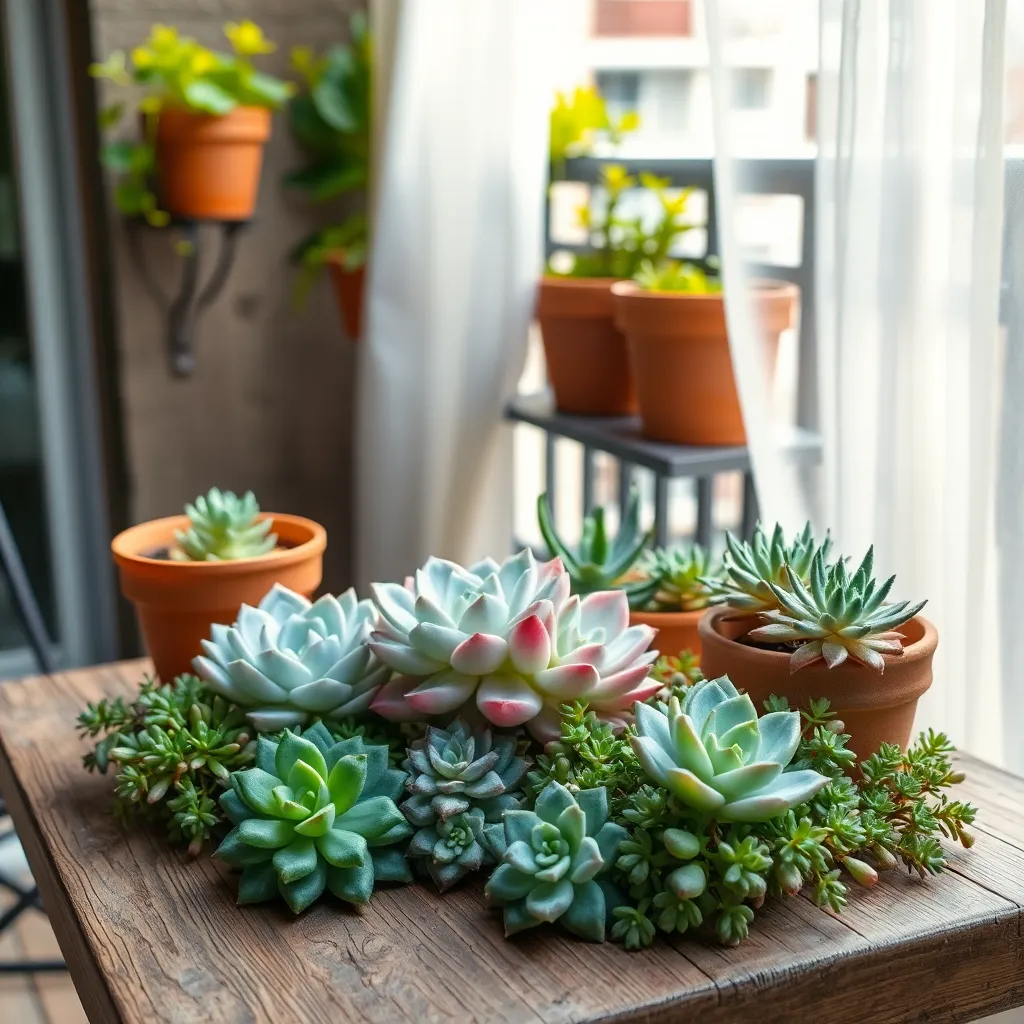
Choosing compact succulent varieties is an excellent way to add greenery to small apartment spaces. These petite plants are perfect for tight spots like windowsills, shelves, and countertops, making them ideal for urban gardeners.
Consider opting for succulents such as Echeveria, Haworthia, and Crassula, which are known for their compact growth habits. These varieties thrive in well-draining soil, so a cactus mix with added perlite or pumice is recommended to prevent root rot.
When caring for compact succulents, ensure they receive bright, indirect light for at least 6 hours a day. If natural light is limited, consider using a grow light to supplement their lighting needs, which is a handy tip for apartments with fewer windows.
Watering compact succulents sparingly is key to their success. Allow the soil to dry out completely between waterings, typically every 2 to 3 weeks, depending on the humidity and temperature in your home.
- Check that pots have drainage holes to prevent water from pooling at the bottom.
- Rotate your plants regularly to promote even growth and prevent them from leaning towards the light.
For those looking to expand their collection, propagating succulents can be a fun and rewarding project. Simply take a leaf cutting from a healthy plant, let it callous over for a few days, and place it on top of moist soil until it roots.
Create Multi-Tiered Plant Displays

To maximize limited space in your apartment, consider creating multi-tiered plant displays. By using vertical space, you can have a lush, green corner without taking up much floor area.
Start by selecting a sturdy shelving unit or tiered plant stand that fits your space and aesthetic. Ensure the materials are moisture-resistant, as succulents need periodic watering, which can cause damage to wood or metal over time.
Position your succulents at varying heights to create visual interest and ensure each plant receives adequate sunlight. Succulents thrive in bright, indirect light, so place your display near a window that doesn’t receive harsh midday sun.
When placing succulents on different tiers, remember that the top tiers will dry out faster due to increased air circulation. Water these plants a bit more frequently, but always check the soil moisture first to avoid overwatering.
For beginners, consider using well-draining cactus soil and pots with drainage holes to prevent root rot. Avoid using decorative containers without drainage unless you are confident in your ability to gauge the right moisture levels.
Advanced gardeners can experiment with mixing different succulent varieties to create a vibrant display. Try combining textures and colors to enhance the visual appeal, using trailing succulents like String of Pearls on the top tiers for a cascading effect.
Incorporate Hanging Macrame Holders

Hanging macrame holders offer a stylish and effective way to save space while displaying your succulents. Utilizing vertical space is key in apartments, and macrame holders allow you to suspend your plants from ceilings or wall hooks, keeping your surfaces clutter-free.
When choosing succulents for your macrame holders, consider those that thrive with a bit of neglect, as they will be slightly harder to access. Varieties like string of pearls or burro’s tail are excellent choices because they prefer bright, indirect light and can handle less frequent watering.
Make sure the pots used in your macrame holders have drainage holes to prevent overwatering. A well-draining soil mix, such as a cactus or succulent blend, is crucial to prevent root rot and keep your plants healthy.
Water your hanging succulents thoroughly but allow the soil to dry out completely between waterings. This typically means watering every two to three weeks, but adjust based on your apartment’s humidity and temperature levels.
For those looking to add a touch of creativity, consider dyeing your macrame to complement your interior decor or incorporating beads and other embellishments. This personal touch can make your plant display not only a space-saving solution but also a unique piece of home decor.
Repurpose Small Containers Creatively
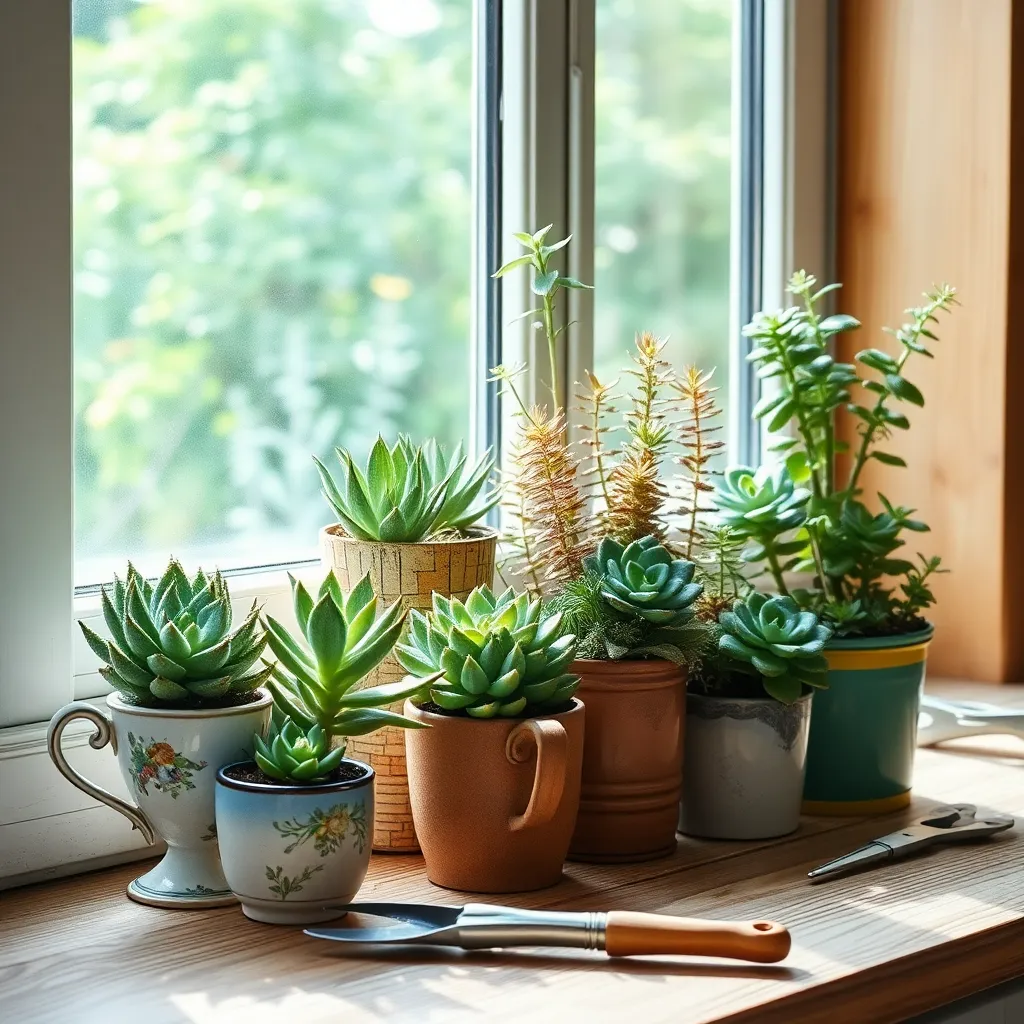
Repurposing small containers is a fantastic way to add charm and flexibility to your indoor succulent garden. You can use items like teacups, candle holders, or even small tin cans to create unique planters for your succulents.
To start, make sure the container has a drainage hole, or add a layer of gravel at the bottom to prevent waterlogging. Succulents thrive in fast-draining soil, so use a cactus or succulent mix to ensure optimal growth.
Position these containers where they receive plenty of indirect sunlight, such as on a window sill or a shelf near a bright window. Rotate the containers every few weeks to encourage even growth and prevent the plants from leaning toward the light.
Water your succulents sparingly, allowing the soil to dry out completely between waterings. A good rule of thumb is to water once every two weeks, but this may vary depending on humidity and temperature in your home.
Opt for Window Sill Arrangements
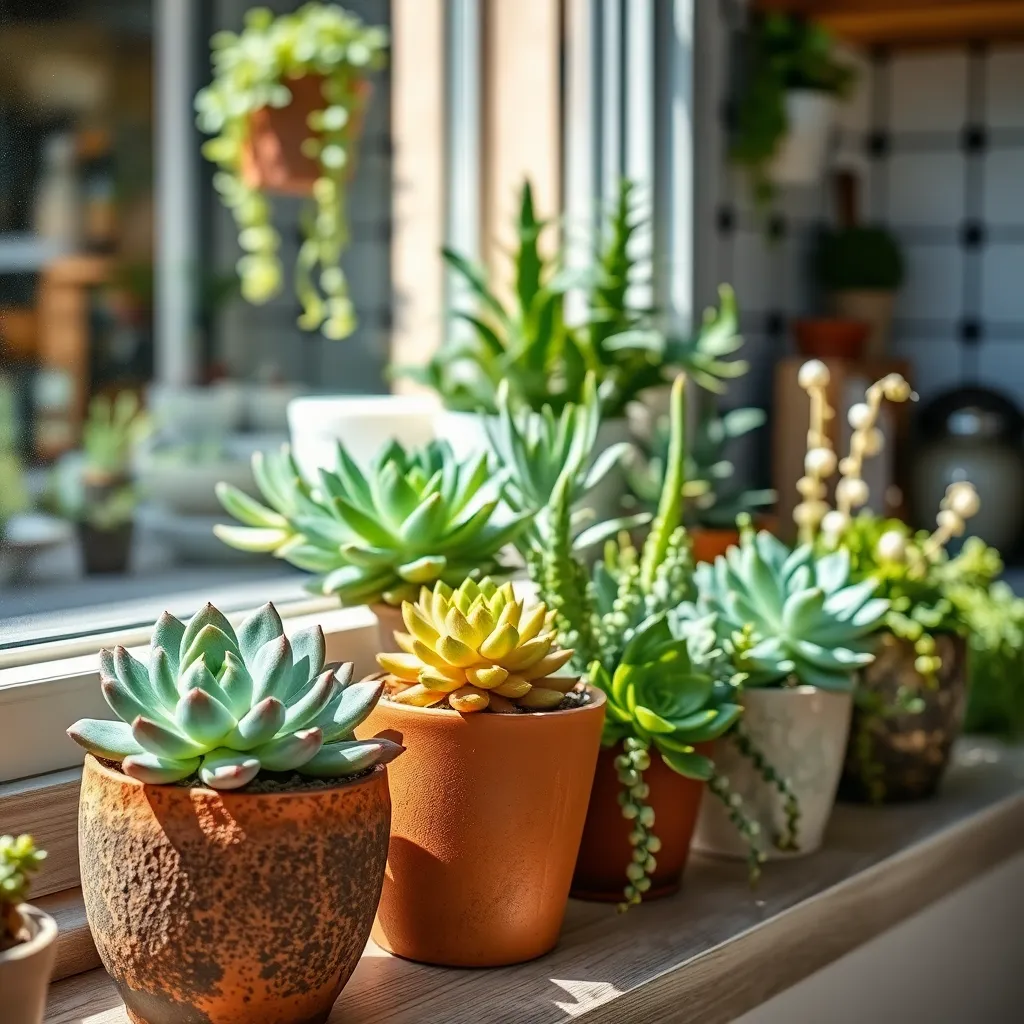
Window sills offer an excellent opportunity to grow succulents, especially in apartments with limited space. Ensure your window gets at least four to six hours of bright, indirect sunlight daily to keep your plants thriving.
Consider using shallow pots that fit snugly on your window sill to maximize available space. Choose a well-draining soil mix specifically formulated for succulents to prevent root rot.
Water your succulents sparingly, allowing the soil to dry out completely between watering sessions. This is crucial for maintaining the health of your plants, as overwatering is a common mistake among beginners.
To enhance your window sill display, arrange succulents of varying heights and colors for visual interest. Advanced gardeners might experiment with propagating succulents from leaves, adding more plants without the expense of purchasing them.
Design Miniature Succulent Terrariums
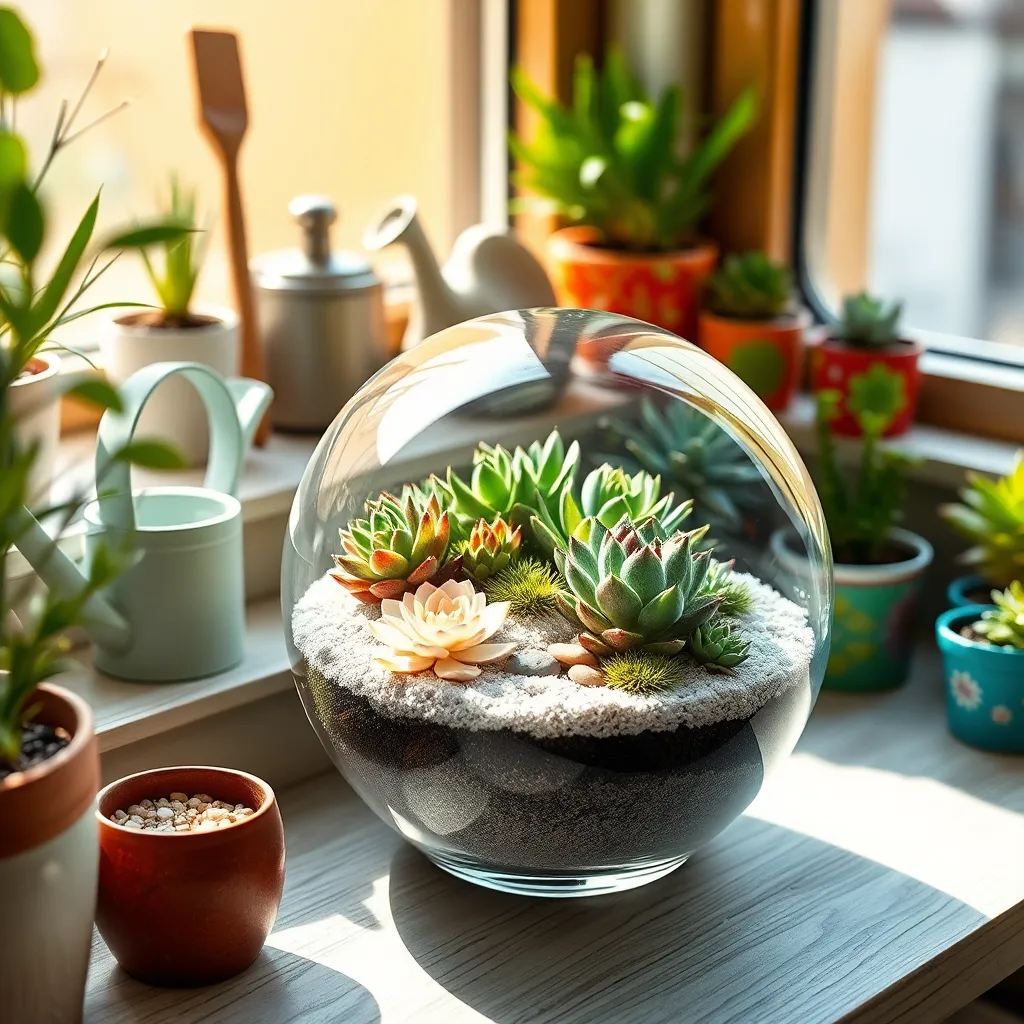
Creating miniature succulent terrariums is a delightful way to bring a touch of nature into your apartment without taking up much space. Start by selecting a shallow, transparent container that allows for proper air circulation and visibility.
Choose a well-draining soil mix, ideally one designed for cacti and succulents, to ensure your plants thrive. Layer the bottom of the terrarium with small pebbles or gravel to facilitate excellent drainage.
When arranging your succulents, consider using a variety of shapes and colors to enhance visual interest. Position taller succulents in the center or at the back of the terrarium, and place smaller ones around them to create depth and layers.
Water the succulents sparingly, approximately every two to three weeks, allowing the soil to dry out completely between waterings. Overwatering is a common mistake, so be sure to keep your terrarium in a spot with bright, indirect light to prevent moisture buildup.
For those seeking an advanced touch, consider adding decorative elements like moss or miniature figurines to personalize your terrarium. Remember, succulents are relatively low-maintenance, making them perfect for apartment dwellers looking to cultivate their green thumb.
Conclusion: Growing Success with These Plants
As we’ve explored in ‘7 Space-Saving Succulent Ideas for Apartments,’ nurturing your relationships can be as fulfilling and rewarding as caring for these resilient plants. From understanding how to create shared spaces that feel like home, to cultivating patience and growth in small steps, each idea reinforces the importance of making room for love and connection even in compact environments. We’ve also touched on the beauty of shared responsibilities, the joy of mutual interests, and the power of thoughtful gestures that sustain relationships.
Now, it’s your turn to bring these concepts to life. Start by choosing one idea that resonates with you and discuss it with your partner today. This small step can spark meaningful conversations and bring you closer together.
Bookmark this article as your go-to guide for refreshing your relationship space with creativity and care. Just like succulents thrive with a little attention and the right environment, so too can your relationship flourish with intentional effort.
Remember, a thriving relationship is just like a well-tended garden—requiring regular attention, creativity, and love. With these tools at your disposal, you’re well on your way to relationship success, no matter the size of your living space.

